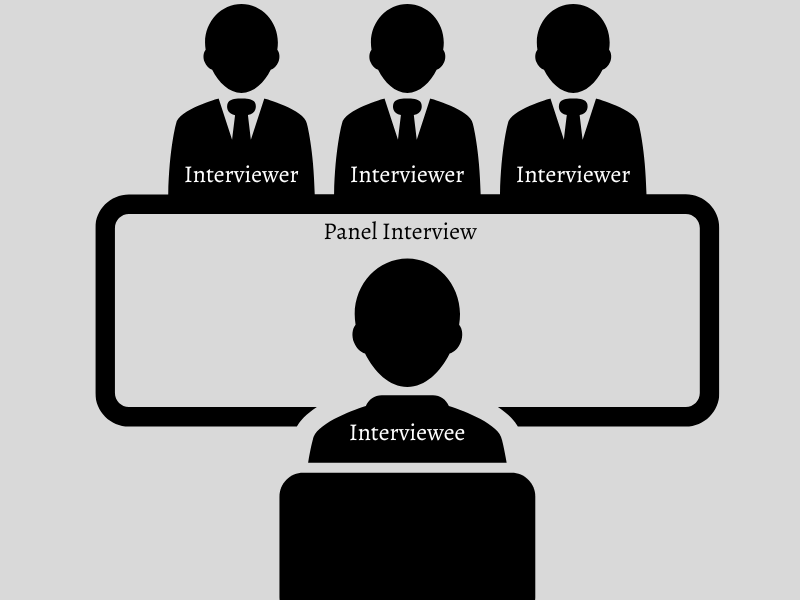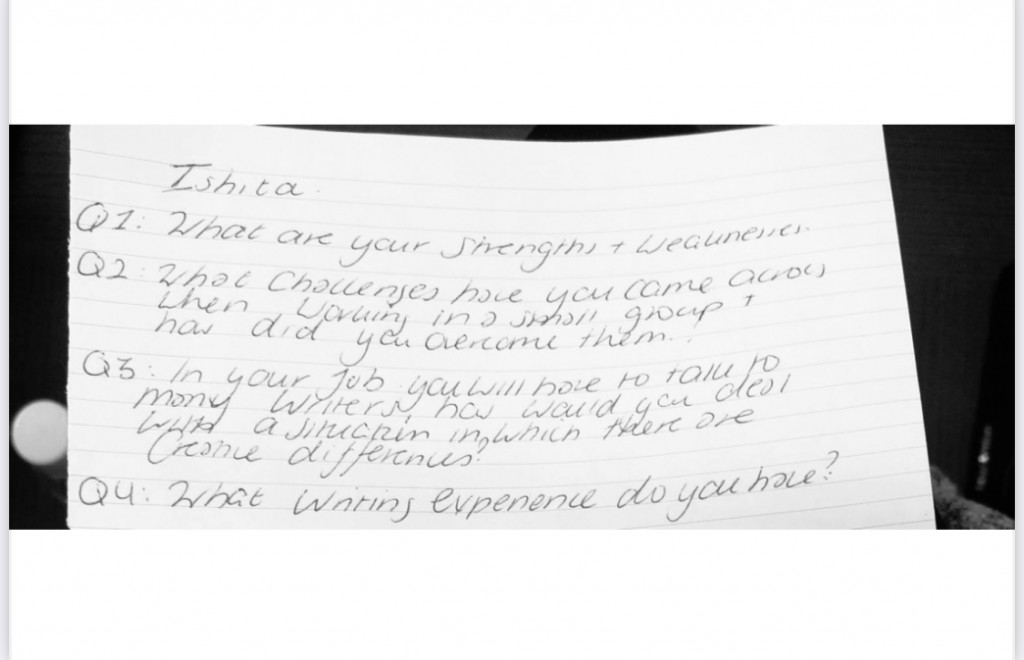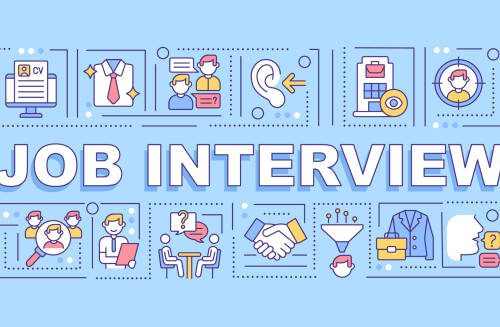D-DAY
“D-DAY” or The Day in the life of a person who is looking for jobs and has applied for jobs is the day of interview, the most important day. The term “interview” is frequently associated with nervousness and fear, but as Elbert Hubbard has said, “There is only one way to avoid criticism: Do nothing, say nothing and be nothing”, so as a student of work-based module in my university, I had the opportunity to get an experience of a panel interview, in a simulated interview environment. I gave an interview for the job of an Editor and took the interviews for the jobs of Teacher, Media and Content Officer, Education Support Officer and Librarian in the simulated interview. This blog will reflect on my experience as an interviewee and as an interviewer by using Schön’s Model of Reflection.
There is only one way to avoid criticism: Do nothing, say nothing and be nothing.
Elbert Hubbard

Donald Schön’s Model of Reflection represents reflection as a professional’s capacity to consider whatever one is practising while they are practising it. ‘Reflection-in-action […] contibut(es) to the practitioner’s repertoire of exemplary themes from which, in the subsequent cases of his practice, he may compose new variations’ (Schön, 1994: 140). He contends that handling the indefinite areas of profession necessitates the capacity to think on the go and apply prior expertise to new situations. Hence, this model of reflection is a perfect fit to reflect on my experience of simulated interview for this blog.
Reflection in Action
- The Experience Itself and Thinking about it during the Event
As an Interviewee:
I had to find a suitable job for myself and tell other candidates about the job so that they could prepare interview questions for me. Even though I am doing my work placement in a primary school, I chose the job of an Editor to give an interview for because I have always been interested in the profession. Before going for the interview, I considered how my current and previous skills connect to the role, as well as what knowledge and abilities I can provide. During the interview, as I was sitting down in front of the panel, I was nervous and conscious about my first impression but also, confident to answer all the questions that were about to come my way. As soon as the first question was asked, I found that all the nervousness was fading away and I listened carefully before responding, maintained my calm, spoke clearly and kept things at professional level and maintained eye contact with everyone which are key aspects of giving an interview in front of a panel because we must address to all the members and not just the person who has asked the question.

As an Interviewer:
Me being someone who has always given interviews for job and never taken one, I always thought that taking interview might be such an easy task. When I got the opportunity to be an interviewer and sit on the panel, I realised that it is perhaps, not as easy as I thought it to be and involves obligations and decisions. Responsibility to bring in the suitable individuals for a firm falls on the shoulders of interviewers. The most difficult task was evaluating individuals. I attempted to base my decisions on their abilities, expertise and capability to retaliate to my questions. The whole experience as an interviewer was very enlightening and I got to learn about experiences and learning of different individuals in the same field of education as myself.
- Deciding on how to act and Acting immediately
As an Interviewee:
I was certain that there would be at least one case question and one behavioural question. Second question asked to me was: “What challenges did you come across when working in a small group of writers and how did you overcome them?”, and it was a behavioural question. Soon as I understood the question, I remembered the STAR technique, where STAR stands for,
S: Situation. What was the situation?
T: Task. What had to be done?
A: Action. What action did the person take?
R: Results. What was the outcome?

“The STAR method is a technique used to answer behavioural interview questions in a structural and compelling way” (Eatough, 2022). Behavioural questions tend to elicit detailed instances of how job seekers have handled previous events or problem.
I thought about an experience when I was working close with a journalist and modified my answer according to the question and fit it into STAR technique to deliver it convincingly and confidently. The confidence I gained after answering the second question, helped me get through the interview easily.
As an Interviewer:
As an interviewer, I had to develop one question for each candidate and there were four candidates in total. When I looked at their CV’s and their job descriptions that they were applying for, every CV told a different story and shared different experiences according to the jobs they were applying for. For some candidates, I wanted to develop behavioural questions because I wanted to hear more of their previous experience and wanted to see if they would be able to use STAR technique or not, and for others I wanted to ask them questions about themselves. My main focus was to urge the participants to explain their perspectives on their lifestyles and surroundings as easily as possible because interviews can make the interviewees feel a bit anxious. Kvale and Brinkmann also state that, ‘at the end of an interview there may be some tension or anxiety, as the subject has been open about personal and sometimes emotional experiences’ (2009, 128). Therefore, I focused on and managed to stage enriching questions for the interview where the interviewees enjoyed answering them.
Reflection on Action
- Reflecting on something that has happened and Thinking what could be changed
After all the interviews were over, it was time to give and receive feedbacks from panel. As an interviewer, I learned to consider and notice simple things such as body language and posture, confidence and clarity in speech. I tried to evaluate participants on these bases and on how well they were able to answer my questions.
Whereas, as an interviewee, I got positive feedback from everyone on the panel. One thing that was pointed out by every member on the panel was that I had very sophisticated body language and had no body movement or expressions, which can be changed in future for real interview environment. Therefore, the feedback pointed out positive and negative points for each candidate, which will be helpful in future.
- Reflective Journal
Writing the whole experience down as a reflective journal is turning out to be very useful as I can reflect up on the experience and bring forward positive aspects as well as the things that I would be able to change in future in real scenarios.
Bibliography
Eatough, Erin. “How to use the STAR interview methods for success.” Better up. September 16, 2022. Web. Accessed February 16, 2022. https://www.betterup.com/blog/star-interview-method
Hubbard, Elbert. “62 Words for Encouragement for a Job interview.” Indeed. May 4, 2021. Web. Accessed February 16, 2022. https://www.indeed.com/career-advice/interviewing/words-of-encouragement-for-job-interview
Kvale, Steinar, and Svend Brinkmann. InterViews : Learning the Craft of Qualitative Research Interviewing. 2nd ed., Sage, 2009. Pg, 128. Print.
Schön, Donald A. The Reflective Practitioner : How Professionals Think in Action, Taylor & Francis Group, 1994. Pg, 140. Print.
You May Also Like

BE A S.T.A.R 🌟
14 February 2023
Job Interviews: Selling Yourself For A Pay Cheque
24 February 2023
